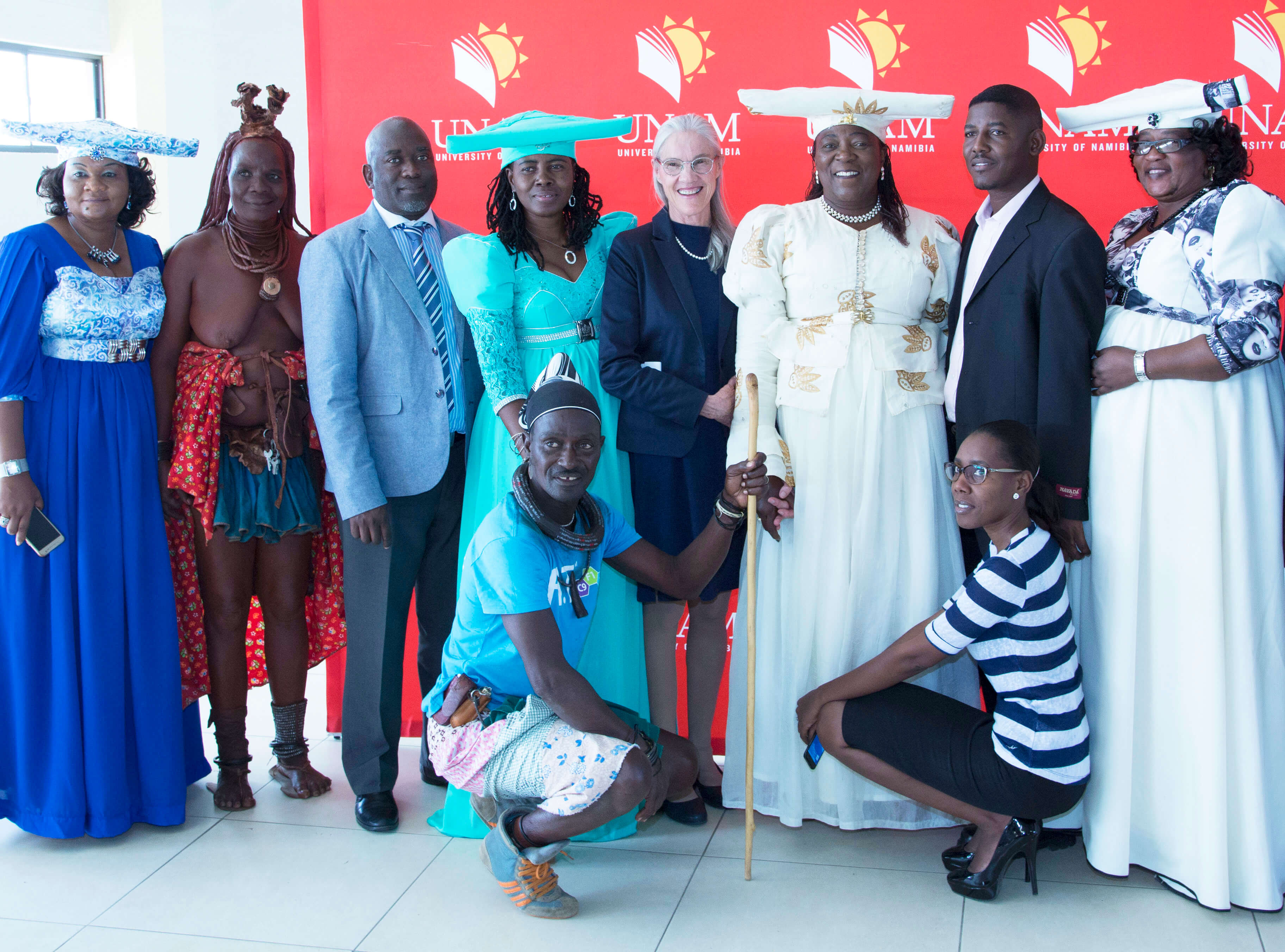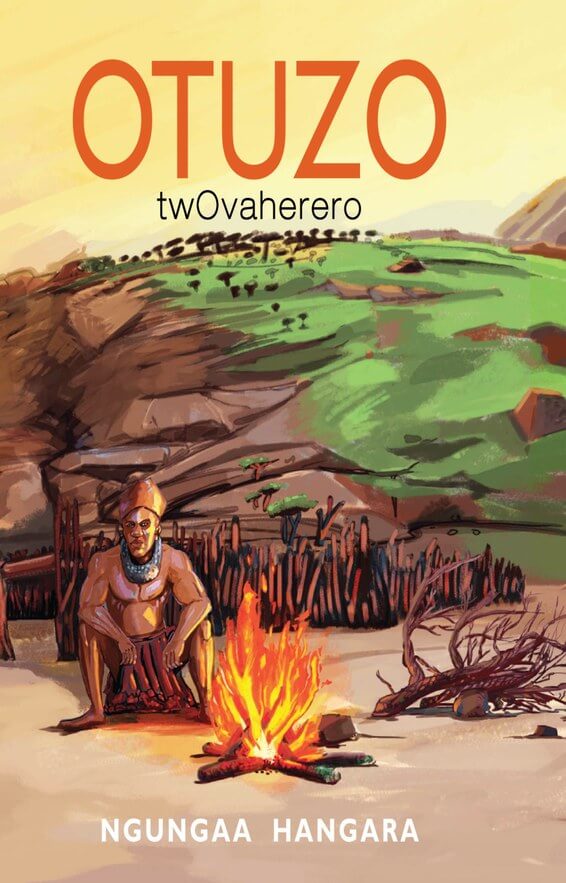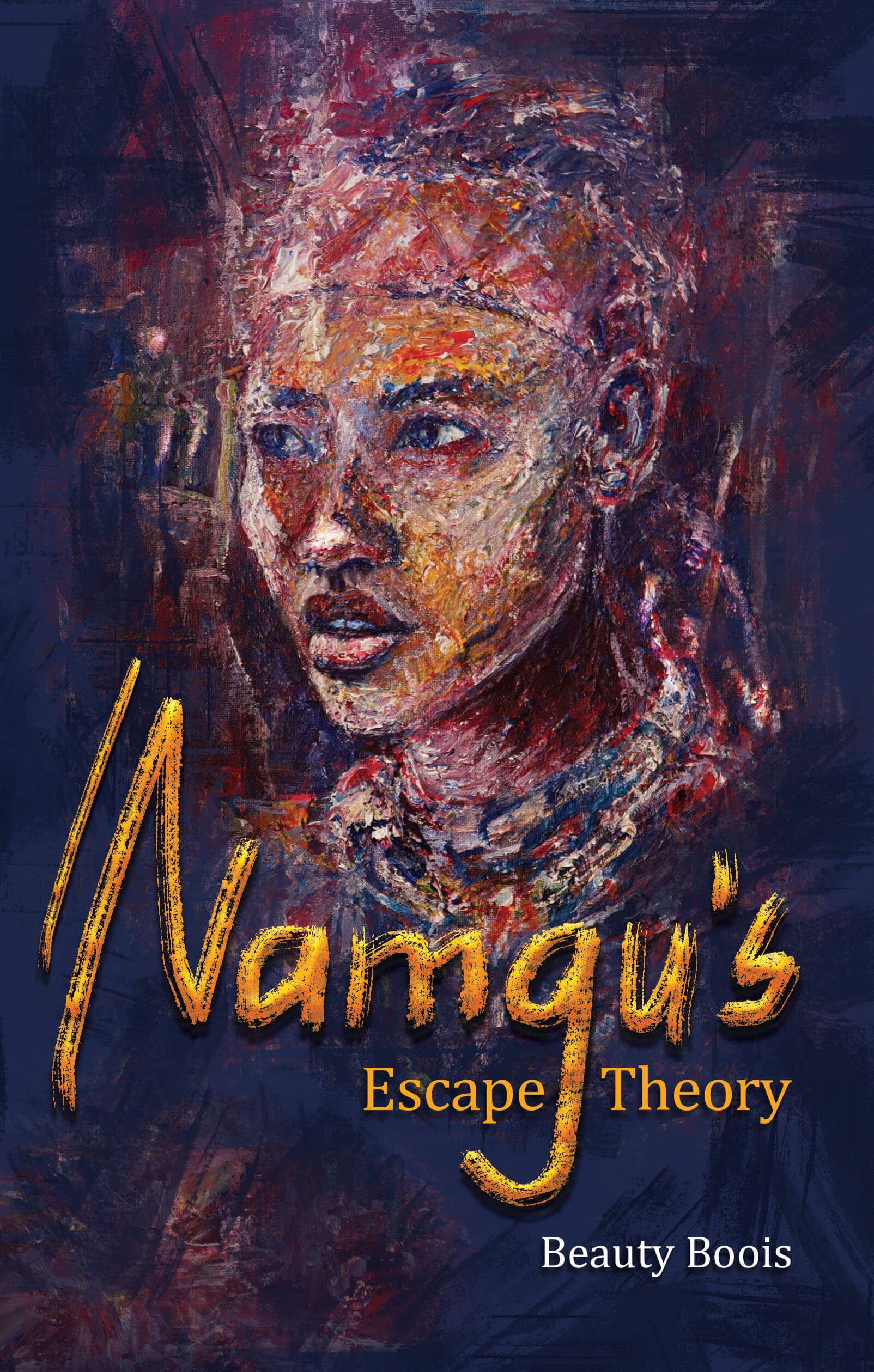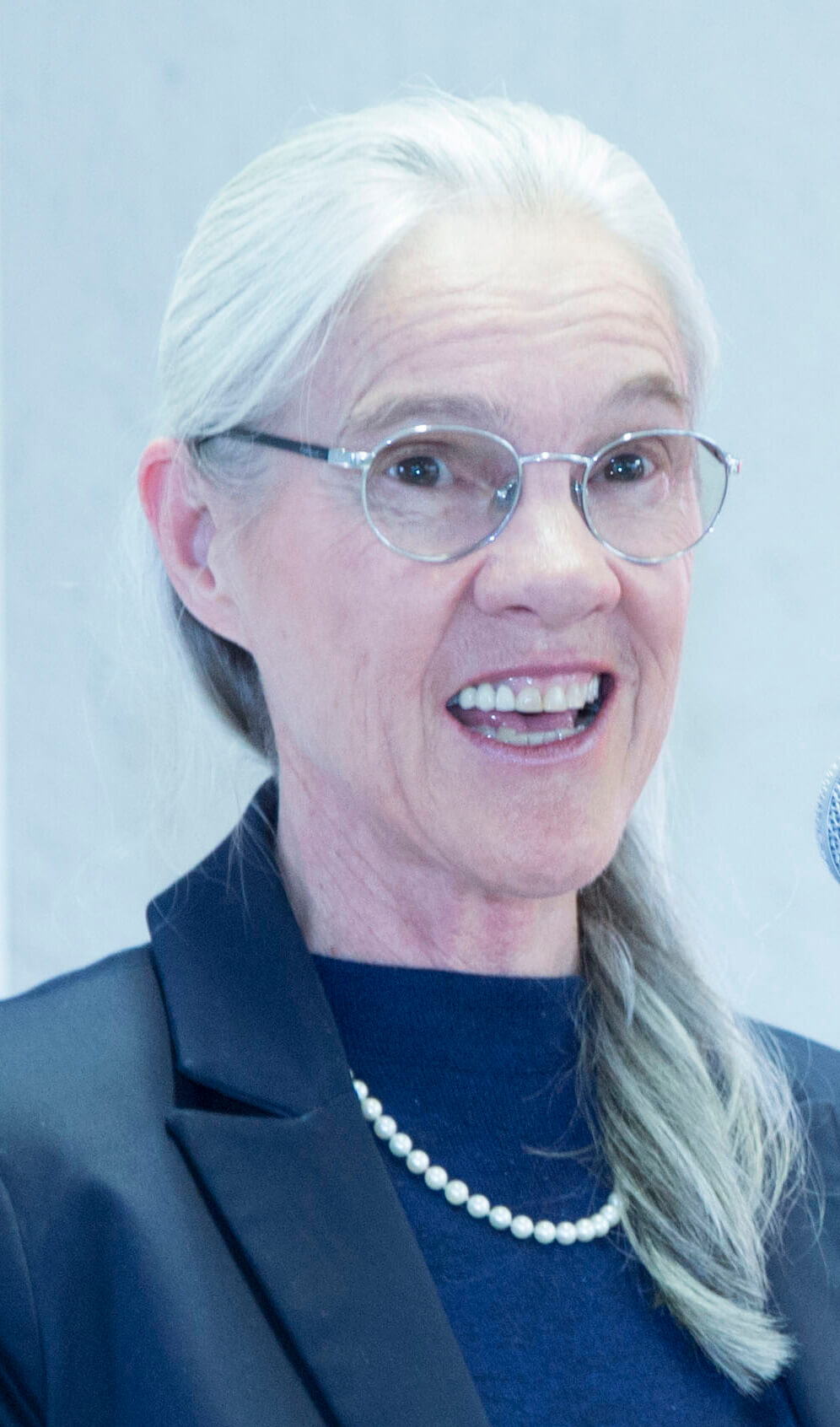Jill Kinahan
UNAM Press, Namibia

UNAM Press publishes works on topics related to Namibia and the Southern African region, reflecting the strengths of the University and the best scholarship in and on Namibia and the region. Published and forthcoming titles include studies of culture and languages; nation building and democracy; education; law; social and political history; autobiographies; the environment and sustainable development. Visit the UNAM Press website here.
June 2020
Stephanie Kitchen (SK): University of Namibia (UNAM) Press is a recently established university press. What was the motivation to establish the press?
Jill Kinahan (JK): The University of Namibia was established in 1992, two years after national independence, and ten years later decided to establish a university press. The University of Namibia Press Committee, chaired by Prof. B. Otaala, put out twelve titles between 2002 and 2005 with African Books Collective distributing the books in Europe and North America. The press, however, was not integrated into the university structure, had no staff or budget, and became dormant after Prof. Otaala retired. In 2008, as all Faculties were actively engaged in publishing, an Interim UNAM Press Committee developed a Publishing Policy Framework to guide the institutional establishment of UNAM Press with a consultant to develop an implementation plan and budget. The Press was finally established in 2011 with three fulltime staff members, the consultant, Ms Jane Katjavivi, becoming the first Publisher. Following the characterization by Francois Van Schalkwyk and Thierry Luescher in The African University Press (African Minds 2017, p. 36), UNAM Press, like most African university presses, follows an editorial logic but aspires to better use social media and digitalization to reach a wider market.
SK: Who works at the Press? Can you tell us some more about the staff and how you interact with the University?
 JK: UNAM Press has had a staff complement of four since 2014, led by the Publisher with an Editorial and Production Manager as deputy,
an Editor, and an Office Administrator who co-ordinates financial processes through the university system. Copy-editing, cover design
and typesetting are outsourced to appropriate freelancers, and printing is done through commercial companies, with preference given to
Namibian firms. Being part of the University is at once our greatest advantage, and limitation: the University covers salaries, office
and publication costs; we have access to the internet, web resources, the University Library, current trends in education, research and
innovation and to academics whom we consult for assessment of manuscripts and the setting of standards for publication in indigenous
languages. We are, however, subject to University bureaucracy and procurement processes (cf. The African University Press, Van Schalkwyk
and Luescher 2017, p. 47, and ABC interview with Francois van Schalkwyk). On the whole,
UNAM Press attempts to align publications with University research goals and has a good reputation. Academics are keen to offer
assistance or to serve on our Editorial Board although they do not constitute the greatest number of our authors.
JK: UNAM Press has had a staff complement of four since 2014, led by the Publisher with an Editorial and Production Manager as deputy,
an Editor, and an Office Administrator who co-ordinates financial processes through the university system. Copy-editing, cover design
and typesetting are outsourced to appropriate freelancers, and printing is done through commercial companies, with preference given to
Namibian firms. Being part of the University is at once our greatest advantage, and limitation: the University covers salaries, office
and publication costs; we have access to the internet, web resources, the University Library, current trends in education, research and
innovation and to academics whom we consult for assessment of manuscripts and the setting of standards for publication in indigenous
languages. We are, however, subject to University bureaucracy and procurement processes (cf. The African University Press, Van Schalkwyk
and Luescher 2017, p. 47, and ABC interview with Francois van Schalkwyk). On the whole,
UNAM Press attempts to align publications with University research goals and has a good reputation. Academics are keen to offer
assistance or to serve on our Editorial Board although they do not constitute the greatest number of our authors.
SK: The Press website mentions involving an Editorial Board. How are its members selected? Do they all belong to the University or are others from outside included? How do you deal with peer review of proposals and manuscripts? How do you incentivise reviewers?
JK: The UNAM Press Editorial Board consists of 8 members, including the Publisher and the Director of the Centre for Research and Publication as ex-officio members. The others are drawn from academic staff, preferably individuals of good standing with a publication record from a representative range of different Faculties, nominated and elected by the Research and Publications Committee. Currently, we are in the process of being re-structured: the UNAM Press publishing unit will resort under the Office of the Library. While the members of the Board are all appointed from the University staff, we aspire to expand this to include corresponding members drawn from the international academic community.
UNAM Press follows established procedures for double blind peer review. Our rule to maintain high standards is to obtain at least one internal specialist review, and one external/international review. The Publisher sends out requests for reviews to appropriate scholars, explaining that we use the review process to assist early career academics to improve their manuscripts as far as possible. We have had generous responses from established scholars, for example, a specialist in climate change from among the top one percent of environmental scientists worldwide wrote detailed comments on a manuscript for us; three US scholars reviewed a manuscript on a brief period of the history of Malawi, not only identifying areas for further work, but also listing references for further reading and where these might be obtained in Malawian institutions. Neither of these manuscripts did we publish, but we see the process as outreach, the fruits of which are long-term, to help young scholars learn what is necessary in order to publish. Often, we give a promising manuscript the benefit of 4 or 5 reviews, as well as our own internal assessment and advice.
The incentive for reviewers is personal contact: an explanation of our strategy, regular communication (e.g. gentle reminders) to endorse how important the review is, and immediate response to a review with comments specific to that review and acknowledgement of the immense amount of labour which goes into reviewing a book manuscript. We offer a complimentary copy of the book, should it be published, as well as a choice of two other books from our list. International scholars are our greatest resource; the most limited resource is specialists in Namibian indigenous languages. If we are really stuck, we offer an honorarium but most scholars understand the process and contribute their time and knowledge generously, for which we are extremely grateful. The quality of our publications hangs on the quality of the reviews.

SK: How would you describe your commissioning/acquisitions strategy? Do you go out looking for manuscripts – through academic and university networks – as well as receiving proposals?
JK: We receive an average of 2 submissions a month. When we published the very successful Otuzo twOvaherero (on Ovaherero patriclans) the number of submissions in indigenous languages increased. While we do solicit manuscripts, usually from specific academics, primarily for books aligned to the University’s research goals or teaching needs, or through co-publishing agreements, I think the subjects and quality of our books exert the strongest influence and encourage further submissions.
SK: Your books include titles on literature, language, history and law. Are these the subjects you intend to concentrate on?
JK: Yes, but we would welcome submissions in other fields, especially economics and medicine as the University has strong, developing faculties in both disciplines. Thus far, none of the submissions in these disciplines have reached the required standard.
 We do adapt to prevailing circumstances, for example, we receive regular requests to publish poetry, although we initially excluded it
from our publication programme as it does not sell well. It is, however, beloved to Namibians, and in 2019 we put out a call to all
poets in Namibia to submit poems for a Namibian tertiary education anthology. The response was overwhelming and our first collected
anthology will come out this year, presenting Namibia through the eyes of these most sensitive and honest of citizens. We are also
publishing our first novel by a promising new young Namibian writer this year which we hope will set all Namibians reading! Many
aspiring novelists come to UNAM Press but most manuscripts are not good enough to publish.
We do adapt to prevailing circumstances, for example, we receive regular requests to publish poetry, although we initially excluded it
from our publication programme as it does not sell well. It is, however, beloved to Namibians, and in 2019 we put out a call to all
poets in Namibia to submit poems for a Namibian tertiary education anthology. The response was overwhelming and our first collected
anthology will come out this year, presenting Namibia through the eyes of these most sensitive and honest of citizens. We are also
publishing our first novel by a promising new young Namibian writer this year which we hope will set all Namibians reading! Many
aspiring novelists come to UNAM Press but most manuscripts are not good enough to publish.
We aspire to contributing to university teaching resources, and with our Namibian Genocide series on the highly topical 1904-1908 colonial war have entered three co-publication agreements with Wayne State and Cornell University Presses, and Brill, for books on the colonial period by international researchers to make their Namibian research accessible and affordable locally.
The first UNAM Press publication was in the field of law, and we welcome further publications in this field. One of our law books was by a team of fourth year law students, while our best seller, Labour Law in Namibia, is by a retired High Court judge whose second book, on administrative law, came out last year.
Our policy specifies that we support and preserve indigenous languages and culture, and we continue to publish in Namibian languages to safeguard traditions and cultural knowledge for future generations. These manuscripts are demanding to produce, as they require specialist knowledge but they are the most rewarding as they generate enormous pride and interest from Namibians, and promote what can be done by local scholars of culture. We attempt to maintain the same high academic standards for these publications, but problems of equity come in, as there are not the same resources for all languages.
SK: Is what you can publish constrained by resources, financial or other?
JK: Van Schalkwyk and Luescher (2017) were absolutely correct in their conclusions. While our financial resources are limited (our budget was cut by 50% this year), we are also constrained by ponderous procurement processes which make accessing funds slow and difficult; university bureaucracy which takes time away from publishing; quality of manuscripts which necessitates long-term devotion to revisions and assessments; number of personnel and staff capabilities.

SK: It is quite well established that academic book publishing is both expensive and labour-intensive. There may be additional constraints on authors looking to publish academic books in African settings. What other forms of support do you offer authors looking to publish books through e.g. mentoring or writing workshops?
JK: I think this is mostly answered by my explanation of the review process. We certainly offer mentorship: author meetings, answers to immediate and urgent queries by email or instant WhatsApp messages. We keep a range of resources such as the UNAM Press Instructions to Authors, the UNAM Press Publishing Process, How to turn your thesis into a book, How to write a Foreword, How to use Track Changes in MS Word, etc. We can offer presentations on getting a manuscript ready for press, and other requested themes. Authors often do not realise just how long it takes to get a manuscript up to international standard and ready for press, and sometimes opt for self-publishing instead. The resulting manuscripts are usually a forest of typos and display weak style and grammar. We try to work with authors to uplift standards and get the best out of them and their material, but this demands time, trust, fortitude and patience!
SK: Do you publish journals? Do you have any plans to take on any journals? What do you think are the constraints on journal publishing within Namibia and the wider region?
JK: The University of Namibia supports six journals run by editors in different Faculties. Although meeting most of the requirements, such as internal and international Editorial Boards, peer review, set procedures, and house styles, the journals are not accredited. The Library is working to establish an online platform, and to register the journals with digital object identifiers and to index them. The project to upgrade these journals is ongoing. Our Policy states that UNAM Press ‘shall publish all internationally accredited UNAM journals’ (UNAM Press Policy SEN/18/650/26 2018). Our recently appointed Vice Chancellor requires academic staff to publish three papers a year, preferably in high impact journals. Although I feared that this would switch researchers’ attention from producing books to papers, we are still receiving more book submissions than we can deal with in one year.
SK: How do you market and distribute your books (working with distributors) in Namibia, regionally in Southern Africa, and internationally?
JK: Distribution is a perennial problem. We have a local distributor, Namibian Book Market (NBM), which operates with a tiny staff but does a fine job. NBM
distributes books to local booksellers, and, four times a year, appropriate publications to outlying tourist lodges in remote areas. To
get books, particularly in indigenous languages, into the rural areas we are experimenting with getting authors to sell their own books
when they travel, and have confirmed the general trend that books promoted by the authors sell better than others. NBM does not have
links with the northern part of our big country where there is only a small branch of our campus bookstore, Van Schaik, which is
responsible for supplying student needs. Van Schaik is a South African chain with many campus bookshops in that country, but Namibian
material seems to have limited appeal and Van Schaik, like other South African distributors, is interested in only a small number of
titles from our list. The costs of transporting and storing books in South Africa, the discount expected and the 25% return on that are
not encouraging. ebooks and print on demand offer an avenue to explore. We use only African Books Collective for international
distribution of print on demand and ebooks, and I am envious of the number of international distributors which Wits University Press
uses.
a perennial problem. We have a local distributor, Namibian Book Market (NBM), which operates with a tiny staff but does a fine job. NBM
distributes books to local booksellers, and, four times a year, appropriate publications to outlying tourist lodges in remote areas. To
get books, particularly in indigenous languages, into the rural areas we are experimenting with getting authors to sell their own books
when they travel, and have confirmed the general trend that books promoted by the authors sell better than others. NBM does not have
links with the northern part of our big country where there is only a small branch of our campus bookstore, Van Schaik, which is
responsible for supplying student needs. Van Schaik is a South African chain with many campus bookshops in that country, but Namibian
material seems to have limited appeal and Van Schaik, like other South African distributors, is interested in only a small number of
titles from our list. The costs of transporting and storing books in South Africa, the discount expected and the 25% return on that are
not encouraging. ebooks and print on demand offer an avenue to explore. We use only African Books Collective for international
distribution of print on demand and ebooks, and I am envious of the number of international distributors which Wits University Press
uses.
SK: Do you publish both print and ebooks? Do your authors and readers expect both?
We recently entered an agreement with Baobab eBook Services to attempt to make our books available free of charge to staff and students as ebooks, but excluded textbooks as these sales provide our primary return. With textbooks, as with other books, we try to keep our prices as low as possible for the Namibian market. Our market is miniscule, considering that the total population of Namibia is around 2.5 million. Clearly, a dedicated online bookshop is necessary to distribute ebooks successfully with a viable return, but this entails negotiation through the University system to set up. While print on demand would allow us to print much smaller runs, or individual books, we are wary of perfect binding which does not last in our arid climate where the glue becomes brittle, so we retain the more expensive threadsewn binding and carefully calculate sales potential and print runs. Sometimes we misjudge the market and a book just does not sell, taking up shelf-space in our store.
SK: Do you co-publish with other academic presses beyond Namibia? Are you also co-publishing books originating elsewhere?
JK: Yes. We have had enthusiastic approaches from Sean Kingston Publishing UK, Wayne State and Cornell University Presses, and Trident Media Ltd who offered licences for Namibian editions of books on Namibian research by foreigners to make this research accessible and affordable in Namibia. Currently, we are working with UNISA Press on a new edition of a 1980s book on Oshiwambo Folk Tales.
SK: Do you think there are any advantages of being part of a wave of newer university presses recently established on the continent? (See e.g. Interview with Kwara State University Press, Nigeria.) Are there networks and connections between such presses within Southern Africa? What are the benefits of such collaborations?
 JK: There would be great value in being linked into a network of university presses in Africa. My connections with
university presses in South Africa have been rewarding and helpful, for example, with Wits University Press, which involved us in the
project to develop an index of Southern African scholarly books with its forthcoming website African
Scholarship Online.
The Publisher of UKZN Press, Debbie Primo, was very helpful with a discussion on royalty payments, which caused me to revolutionize our
royalties. We now pay a ‘signing fee’ rather than annual royalties. Other African university presses I am sure have problems similar to
ours and innovative solutions to share. For example, I was most interested to read the ABC
interview with Kwara State University Press
Publisher, Prof. Solihu, on ebooks. He mentioned that apart from ebooks not carrying the same prestige as printed books, there are
technical difficulties in dealing with the special fonts required for a tonal language such as Yoruba, difficulties which he has
evidently solved. These technical problems can make publishing in indigenous languages seem too difficult. We have similar problems with
click and tonal languages such as Khoekhoegowab, and even with Otjiherero which uses a limited number of symbols with diacritics. These
special symbols are not supported in some fonts, or render text difficult to read in others. Prof. Solihu’s comments show we have
similar challenges, and a similar approach in wanting to preserve and promote indigenous languages and culture, which is encouraging.
JK: There would be great value in being linked into a network of university presses in Africa. My connections with
university presses in South Africa have been rewarding and helpful, for example, with Wits University Press, which involved us in the
project to develop an index of Southern African scholarly books with its forthcoming website African
Scholarship Online.
The Publisher of UKZN Press, Debbie Primo, was very helpful with a discussion on royalty payments, which caused me to revolutionize our
royalties. We now pay a ‘signing fee’ rather than annual royalties. Other African university presses I am sure have problems similar to
ours and innovative solutions to share. For example, I was most interested to read the ABC
interview with Kwara State University Press
Publisher, Prof. Solihu, on ebooks. He mentioned that apart from ebooks not carrying the same prestige as printed books, there are
technical difficulties in dealing with the special fonts required for a tonal language such as Yoruba, difficulties which he has
evidently solved. These technical problems can make publishing in indigenous languages seem too difficult. We have similar problems with
click and tonal languages such as Khoekhoegowab, and even with Otjiherero which uses a limited number of symbols with diacritics. These
special symbols are not supported in some fonts, or render text difficult to read in others. Prof. Solihu’s comments show we have
similar challenges, and a similar approach in wanting to preserve and promote indigenous languages and culture, which is encouraging.
SK: How do you see university press publishing in Africa (and elsewhere) more generally: what is the role of the university press, do you think – to disseminate knowledge, to make a profit, to publish textbooks – all these things?
JK: I see the role of the university press in Africa as that of encouraging African writers and researchers to publish locally to a high international standard; to provide local, in our case, Namibian, research results for the academic community and the country at large, especially to counteract the overwhelming influence of our powerful neighbour South Africa; to produce textbooks with Namibian/African material which illustrates broad intellectual and research concepts, while also contextualizing that material regionally and globally; to record and preserve for the future the fast-disappearing but precious indigenous, cultural, traditional and language resources of the country, and to build up a body of local Namibian literature. While UNAM Press is not able yet to be self-sustaining and won't be for some time to come we can promote the extraordinary gems of knowledge, research and literature that come out of Namibia, and show that we can do this ourselves with some help from the wider academic community.
SK: The UNAM website also includes a link to the University Repository. Is the Press responsible for that? How are both the Press and the Repository integrated into the University’s structures?
JK: UNAM Press was set up as an independent publishing unit and has so far not been responsible for the Repository, which is a specific achievement of the University Library and makes an enormous amount of research and other material available. I am optimistic that our restructuring into the Office of the University Librarian will bring closer links and co-operation to our mutual benefit and the benefit of the scholarly community

With majors in English and Linguistics, and a postgraduate teaching diploma, Jill Kinahan has spent more than 30 years working with authors and editing scholarly publications, both books, theses and journals, in a wide range of fields including archaeology, indigenous language, law, sociology, and the environment. She was based at the National Museum of Namibia for 15 years, thereafter working in a Namibian archaeological consultancy, Quaternary Research Services. In 2000, she received a PhD from Uppsala University, Sweden, for her work on the archaeology of first contact between indigenous Namibians and European settlers, a field in which she remains active. In 2014, she joined the University of Namibia Press, first as Editorial and Production Manager, and in 2016 as Publisher.